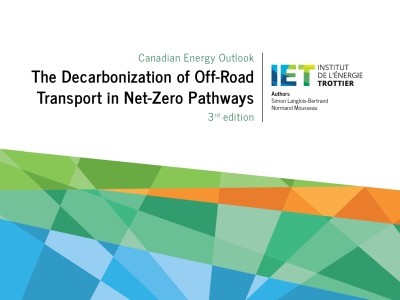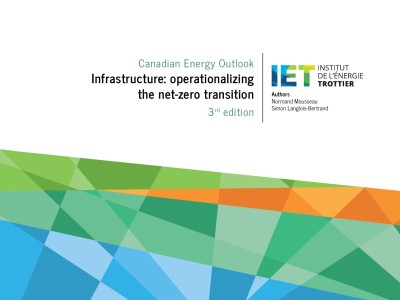Canadian Energy Outlook
Modelling and analysis


The first report of this 3rd edition of the Outlook provides an overview of the main trends in energy consumption and production across Canada. It also indicates how these trends relate to a broader assessment of the evolution of greenhouse gas (GHG) emissions.
The second report of this 3rd edition of the Outlook presents scenarios where Canada reaches net-zero by 2050. Building on extensive techno-economic modelling, it compares different pathways to realize this objective and maintain it through 2060, contrasts them with a business-as-usual future where no additional policy measures to reduce greenhouse gas emissions would be implemented, and discusses the transformations highlighted by these scenarios and how these can help make choices today.
Following on from the two main reports, this publication is the first thematic report in the 3rd edition of the Outlook.
The decarbonization of the Canadian economy to achieve the net-zero objective by 2050 requires rapid and profound transformations in all emissions sources. In efforts to accelerate decarbonization and the implementation of net-zero pathways for Canada as a whole, off-road transport has so far largely fallen between the cracks, despite being projected to become transport’s main source of emissions in 2050. Part of this is due to the fact that the exact services provided in the off-road category vary substantially, from very large machinery in quarries to handheld leaf blowers. This report intends to serve as a background paper for discussions on strategies to decarbonize off-road transport in Canada in order to and make this sector a key contributor to a net-zero pathway.
Following two main reports and a first thematic report, this second thematic report presents the challenges related to infrastructure.
To better understand the operational challenges associated with Canada's transition to a carbon-neutral economy, this report explores the nature of the sectoral transformations – buildings, transportation, energy production, CO2 capture and sequestration (CCS), etc. – that Canadian infrastructure will need to undergo to enable us achieving carbon neutrality. Drawing on the latest technical and economic modelling results and the latest technological advances in low-carbon energy production and use, it describes specific pathways for deploying these infrastructures. It thus seeks to make the structural challenges that will accompany the energy transition in a primarily Canadian context more concrete, while integrating the international context where appropriate.



